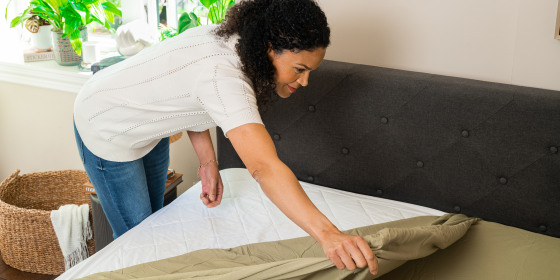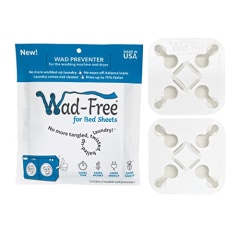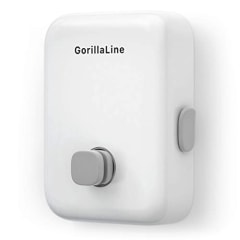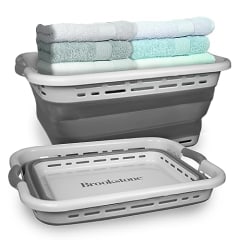We spend a third of our lives on our bedding, leaving behind 56 hours a week of sweat, body oil and dead skin cells. So how often should we be washing away that funk, and what's the best way to do so?
We asked Mary Zeitler of Whirlpool, as well as Jessica Ek from the American Cleaning Institute, for professional tips on tackling this chore. From water temperature to drying time, there's definitely a right way and wrong way to wash bedding. Whether you're wondering how to wash new sheets for the first time or how to wash bedding you've had for a while, following these tips will help you get your sheets cleaner — and help your bedding last longer, too.
How often should you wash your sheets?
You should be cleaning your sheets more often than you'd think! To keep dust mites and other allergens at bay, Zeitler suggests washing and changing them at least once a week.
What setting should I wash my sheets on?
While cotton sheets are safe to launder on any cycle, always check the care label for washing instructions first.
Select the cycle that fits the soil level of the sheets — normal for light soil, heavy duty for stains and heavy soil. Over-washing causes sheets to wear out faster.
What is the best water temperature to wash sheets?
White and light-colored cotton sheets wash well in the washing machine on any water temperature. However, during the cold and flu season, Zeitler suggests sanitizing your sheets by washing them on a hot/warm cycle. This will also help reduce allergens.
To keep darker-colored sheets from fading, use cool water to wash and rinse.
How to dry sheets
It's important to follow the dryer temperature suggested on the care label. High drying temperatures cause wrinkling, shrinking and over-drying, which weakens fibers. Zeitler recommends drying on the "less dry" or "damp alert" setting to prevent these problems. It also gives you a chance to check whether the sheets need to be untangled and tossed back in.
To keep sheets drying evenly, toss in wool or rubber dryer balls, or use a couple of tennis balls tied in a cotton sock.
Want to go green? Drying sheets outdoors gives them a fresh scent, plus it saves energy. Line dried sheets do, however, have a rougher feel. To soften fabric a bit after line drying, toss the sheets into the dryer for just a few minutes.
How to wash sheets by hand
Ek doesn't recommend washing sheets by hand, if you can help it.
"Sheets are designed to be washed every couple of weeks and therefore are nearly always machine-washable," Ek says. "In addition, they are bulky to wash by hand."
She says that it might be worth the work for satin sheets but otherwise you should throw them in the washing machine, even if that means a trip to the laundromat. However, the best way to hand wash them is probably in the bathtub, she says.
- Make sure your tub is clean, then fill it with cool water.
- Mix in some laundry detergent, following the instructions on the label to determine how much. Let that soak and gently agitate the water.
- Drain, rinse and wring out your sheets and hang to dry.
How we chose the best products for washing your bedsheets
TODAY.com spoke to an expert to find the best practices for washing and drying your bedsheets. Based on the guide they provided, we found affordable and fan-favorite products to help you get the job done.
Meet the experts
- Mary Zeitler is the lead consumer scientist of fabric care at Whirlpool.
- Jessica Ekis the senior director of digital communications at the American Cleaning Institute. She’s previously spoken to TODAY.com about why you shouldn’t use dryer sheets, how to shop for the best reusable paper towel and what to look for in a quality kitchen sponge.







